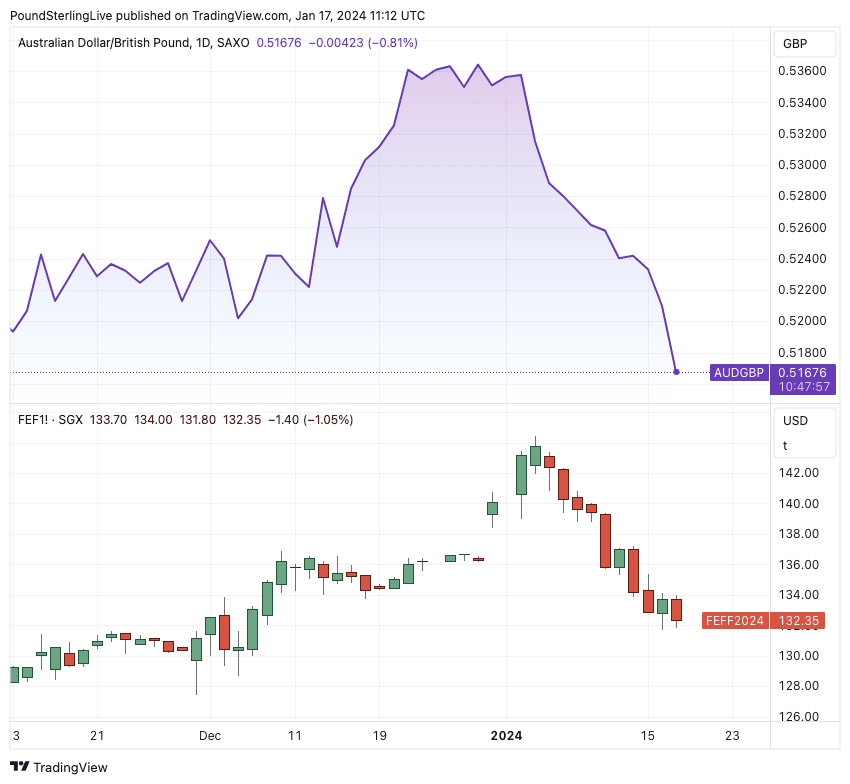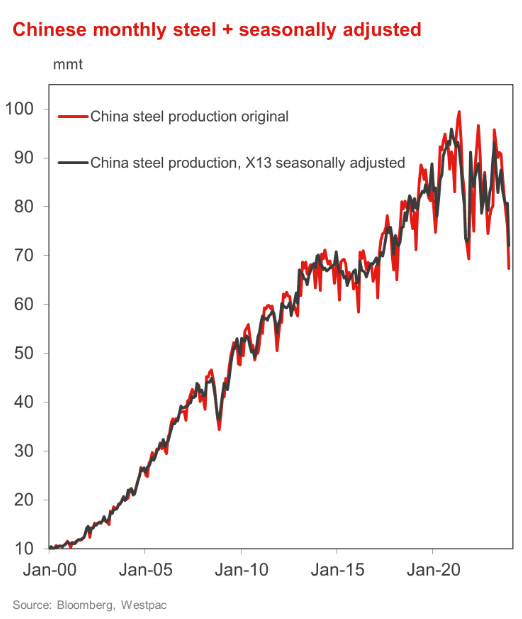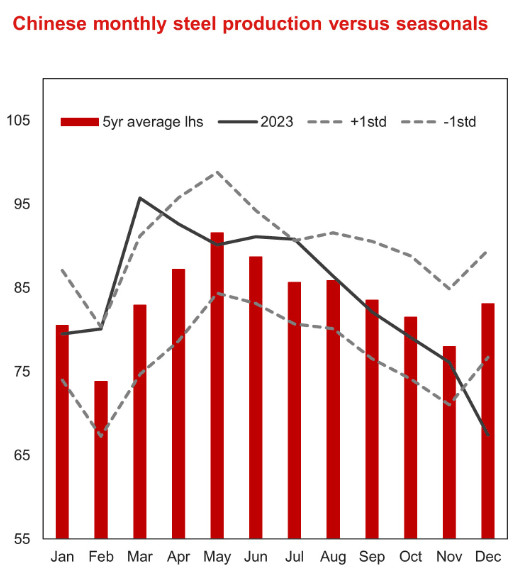Australian Dollar Hit By Poor Chinese Steel Production
- Written by: Gary Howes

Image © Adobe Images
Disappointing steel production outturns from China are weighing on iron ore prices and help explain the Australian Dollar's weak start to 2024.
The Aussie Dollar is the year's biggest loser in the G10 FX space in a development that coincides with a downturn in iron ore prices.
Iron ore is Australia's biggest foreign currency earner, and China's steel producers are the biggest market for this raw commodity.
It was reported midweek that Chinese crude steel production in December extended its decline into a fifth consecutive month. Crude steel production in December extended its decline for the fifth consecutive month, falling by 11.4% from November to 67.44 million tons, the lowest monthly output since December 2017, according to NBS data.
"No way to 'sugarcoat' it, that's just very weak Chinese steel production data for December," says Robert Rennie, an analyst at Westpac Bank.
Iron ore prices extended 2024's downturn on the day these Chinese industrial steel production figures were released, and as the below chart shows, this is linked to Australian Dollar weakness:
Above: AUD/GBP (top) and wholesale iron ore prices. Track AUD with your own custom rate alerts. Set Up Here.
The above chart shows the Australian Dollar to Pound exchange rate as a preferred currency pair, as this eliminates USD strength that also characterises 2024 thus far.
Of course, the Dollar and commodity prices are often negatively correlated, but the stuttering steel output offers additional insights into iron ore and AUD weakness.
Compare GBP to AUD Exchange Rates
Find out how much you could save on your pound to Australian dollar transfer
Potential saving vs high street banks:
A$48.75
Free • No obligation • Takes 2 minutes
Westpac's Rennie says seasonal factors can't explain away the disappointing December steel production figures as December is 'normally' a stronger month.
He says this amounts to the weakest steel production in almost 6 years at -13.5% on a year-on-year basis or -4.1% on a 3-month y/y basis.
Rennie adds that this is the fifth month in a row where steel production has come in more than 1 standard deviation below his forecast based on CISA data for large steel mill production.
However, December saw the largest downside surprise/ error on this model on record back to early 2019, he says.
Rennie says the data suggests less efficient steel mills are being aggressively shuttered for 2023 steel production to come in close to the 'just over 1bnt' steel cap.
"It makes you wonder what on earth traders were thinking paying $140+ for iron ore at the beginning of 2024", says Rennie.
China's National Bureau of Statistics said crude steel output in 2023 was flat from a year earlier, official data showed on Wednesday, steadying after two consecutive years of decline, as mills ramped up production to generate cashflow and faced fewer emissions curbs.
The world's largest steel producer manufactured approximately 1.02 billion metric tons.
Compare GBP to AUD Exchange Rates
Find out how much you could save on your pound to Australian dollar transfer
Potential saving vs high street banks:
A$48.75
Free • No obligation • Takes 2 minutes







